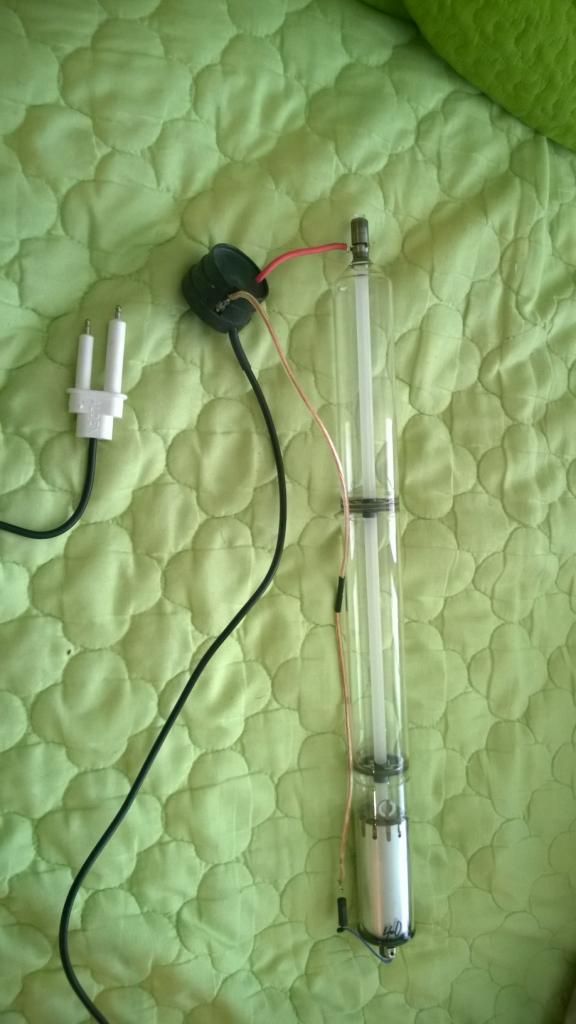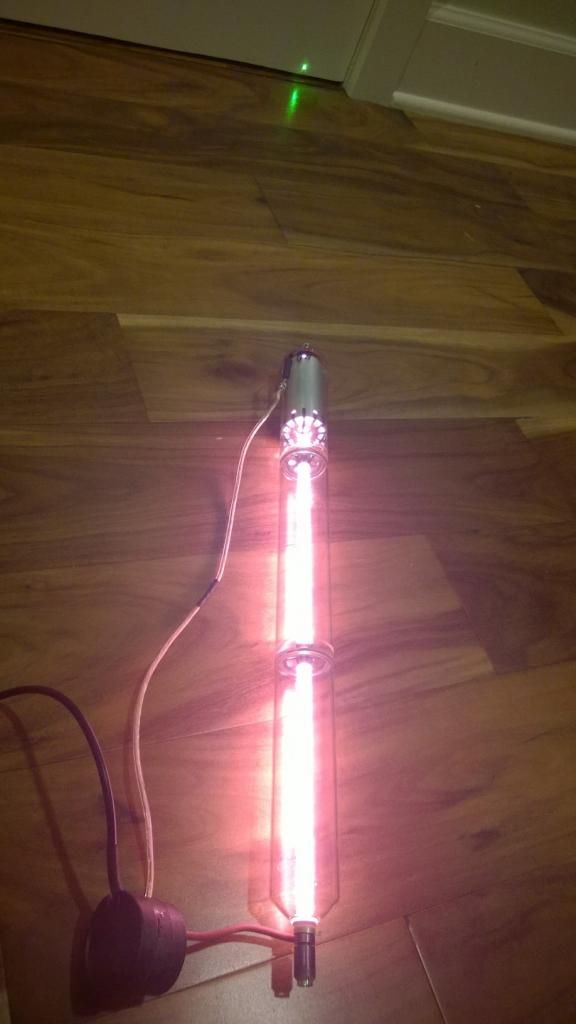Those head end caps have ballast resistors in them, remove the resistor you have on the cathode (aluminium can side). Ballast resistances go on the anode side only, btw.
not necessarily. alot of bigger tubes have them at both ends. But the bulk needs to be at the anode end. bear in mind most tubes do start up right away, but some do take a few moments to spring to life. I once had one that took almost a full 15-20 seconds to start!
if you have a proper power supply, which it sounds like you do, then make sure you have the ballast within 3 inches of the anode. Its very important. if you run it once and it doesn't light. turn it off, then carefully unplug the alden and short the pins on something metallic. if you get a loud snap, then likely the voltage is working, if not, you have a short somewhere.
If you want an easy way to check the tube, (and it fits, this one might not) put it in the microwave. Take a full glass of water (for load balance, very important) and put the tube in the microwave for about 5-10 seconds on a fairly low power (so you don't damage or cook the tube) I usually do pwr [7] on mine. if the tube is good it should light up all over as the gas gets energy from the microwaves. just don't leave it in for very long or you'll cook the tube. do it in short few second pulses on a moderately high power. even if the tube is bad, but still retaining its gas it'll light. I have an old softseal REO tube i can excite this way. it's up to air so it lights a dull purple, instead of the normal color. but if it is intact it should light up.
Check your wiring as well. you might have a bad connection somewhere, if you have exposed metal/solder joints then you can tend to get alot of arcing. HV has an easy time getting away, so make sure you have everything insulated properly. make sure all your solder joints are clean and solid and covered...also never solder to the tube, always do it to a clip, then clip to the anode groove. and make cure the contact is nice and snug. Try not to do it near the mirror, and as close to the glass envelope as possible. What are you using to power the power supply brick? is it AC? or DC?
The DC ones will need at least 12V @ 3A to work right. I'm using a Laser Drive 180T-2800-6.5-TTL-5
if you get flashes, then the current is likely too low. if the pot on your power supply isn't calibrated, you may have to turn it up. pot range on these is typically 4-7mA usually clockwise is to turn the current up, and counter-clockwise is to reduce it.
If you want i'm on skype and can help you. just click on the symbol in my profile bar.






